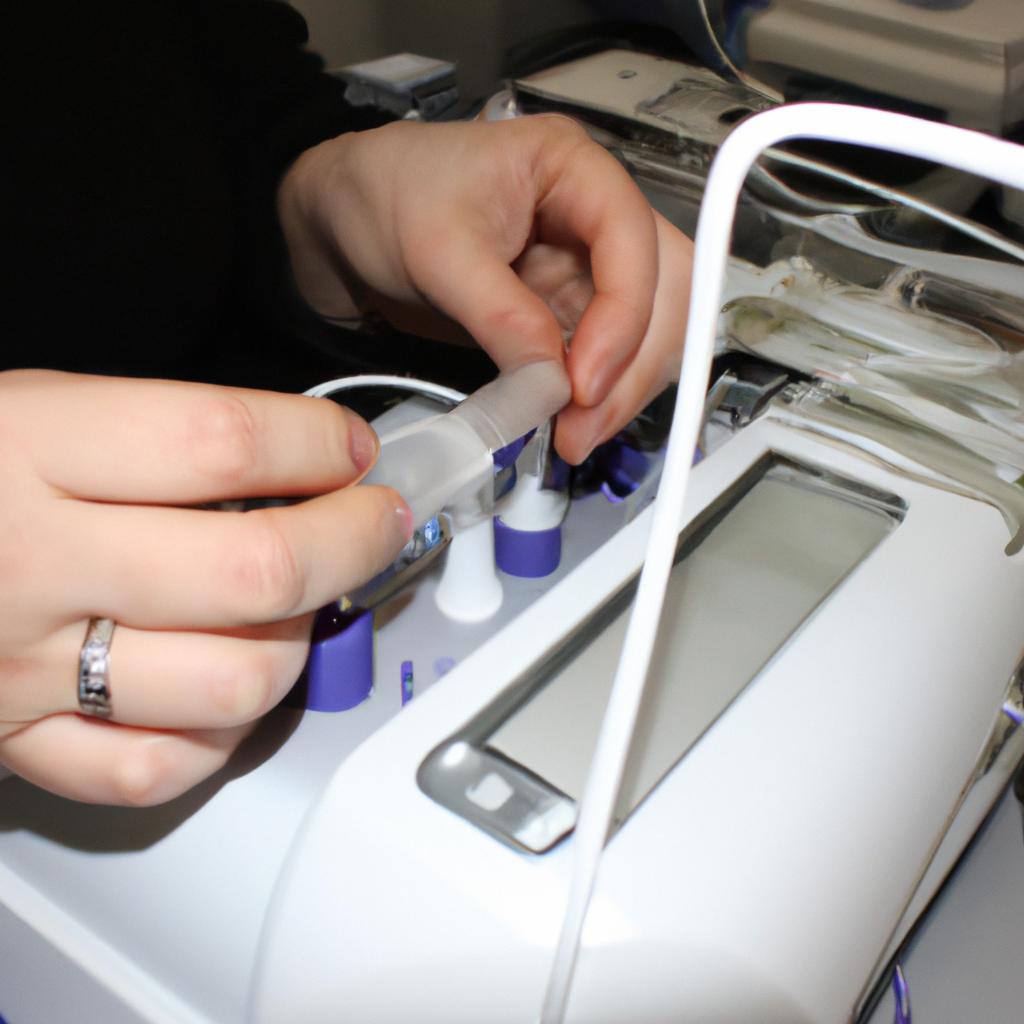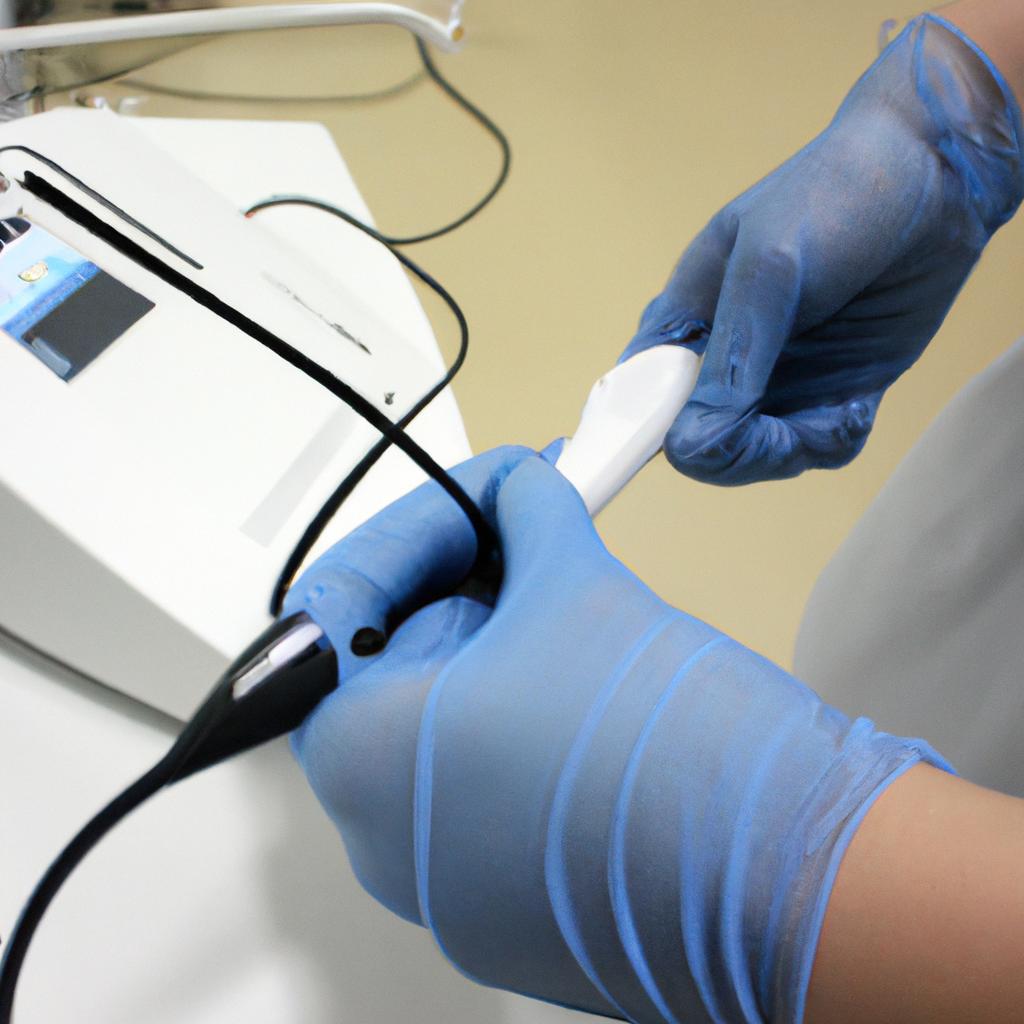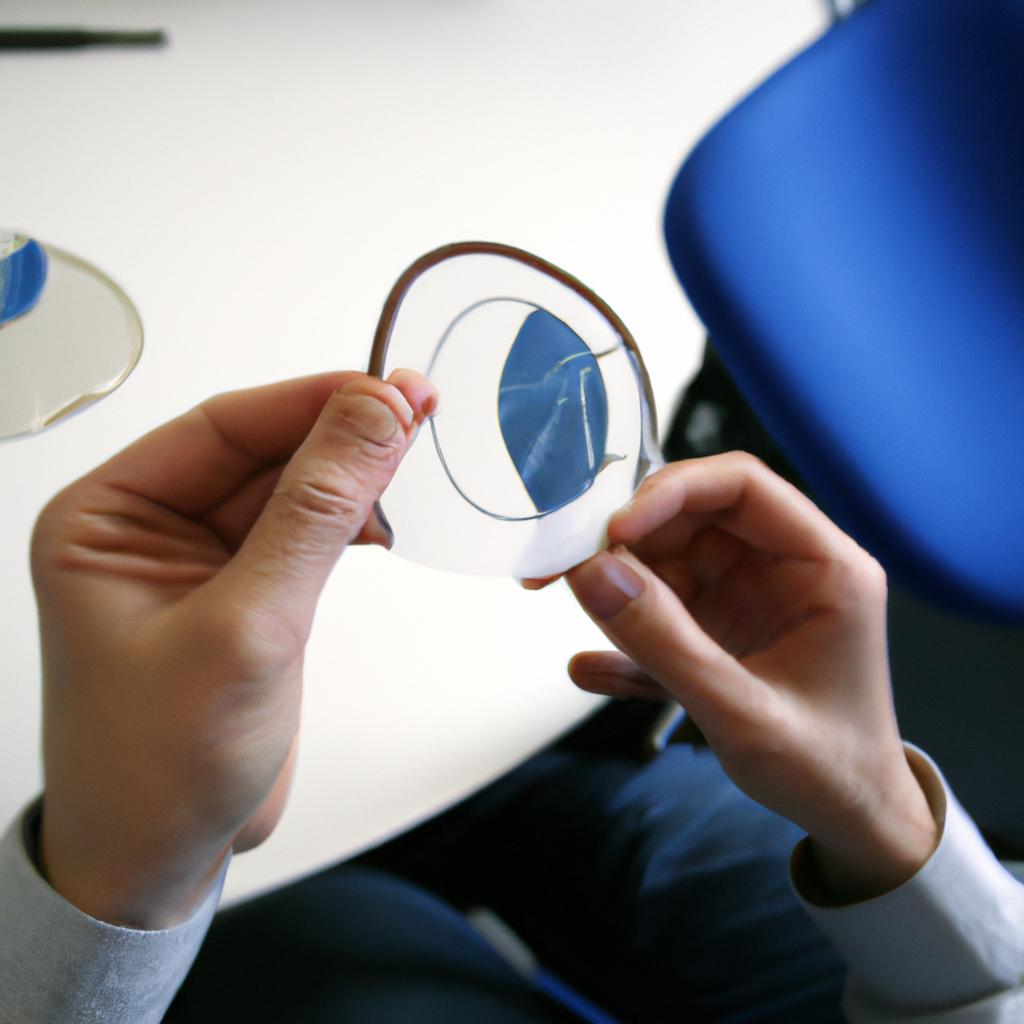Biocompatibility is a critical factor in engineering when it comes to designing medical devices for safe use. Ensuring that these devices are compatible with the human body is of utmost importance, as any adverse reactions or complications can have severe consequences for patient health and well-being. For instance, consider the case of an artificial hip implant that causes inflammation and tissue damage due to its poor biocompatibility. Such a scenario highlights the significance of understanding and addressing biocompatibility issues during the design phase of medical devices.
In recent years, advancements in technology have led to significant progress in the field of biomedical engineering. However, this has also raised concerns regarding the potential risks associated with using such sophisticated devices within the human body. Biocompatibility refers to the ability of a material or device to perform its intended function without causing harm or negative effects on biological systems. Achieving biocompatibility requires meticulous attention to detail in terms of materials selection, fabrication techniques, surface modifications, and overall design considerations.
The purpose of this article is to explore the concept of biocompatibility in engineering and delve into various aspects involved in designing medical devices for safe use. By examining real-life examples and hypothetical scenarios, we will discuss key factors influencing biocompatibility, challenges faced by engineers, current research and advancements, and future directions in the field.
One of the key factors influencing biocompatibility is the choice of materials used in medical device design. Materials must be carefully selected to ensure they are non-toxic, non-allergenic, and do not elicit an immune response. For example, titanium alloys are commonly used in orthopedic implants due to their excellent biocompatibility and ability to integrate with surrounding bone tissue. Additionally, surface modifications such as coatings or textures can be applied to enhance biocompatibility by promoting cell adhesion or reducing bacterial colonization.
Another important consideration is the mechanical compatibility between the device and the biological system it interacts with. Devices should have appropriate strength, flexibility, and fatigue resistance to withstand physiological forces without causing damage or failure. For instance, cardiac stents must be able to expand and contract with each heartbeat while maintaining structural integrity.
Furthermore, interactions at the interface between the device and surrounding tissues play a crucial role in determining biocompatibility. The surface properties of a device can impact cellular responses, such as adhesion, proliferation, and inflammation. Engineers employ various techniques like surface coatings or modifications to optimize cell-material interactions and minimize adverse effects.
Challenges faced by engineers in achieving biocompatible designs include balancing conflicting requirements such as strength vs. flexibility or wear resistance vs. corrosion resistance. Additionally, predicting long-term effects on human physiology can be challenging due to variations among individuals and complex interactions within the body.
To address these challenges, ongoing research efforts focus on developing new materials with improved biocompatibility profiles and enhancing our understanding of host-device interactions at a molecular level. Bioactive materials that actively promote tissue regeneration or inhibit bacterial growth show promise for future medical devices.
In conclusion, designing medical devices with high biocompatibility is essential for patient safety and well-being. Achieving this requires careful consideration of material selection, mechanical compatibility, surface properties, and overall design considerations. With continued research and advancements in the field, biomedical engineers are poised to develop even safer and more effective medical devices that seamlessly integrate with the human body.
Understanding Biocompatibility
Biocompatibility is a critical aspect of engineering medical devices to ensure their safe use within the human body. It involves studying and designing materials that interact harmoniously with biological systems, minimizing adverse reactions such as inflammation or rejection. To illustrate this concept, consider the case of an individual requiring an implantable pacemaker for a heart condition. The biocompatibility of the device plays a crucial role in determining its long-term success and patient outcomes.
To comprehend biocompatibility fully, it is essential to explore its underlying principles and considerations. Firstly, understanding how different materials interact with living tissues is crucial in selecting suitable biomaterials for medical device development. Factors such as surface properties, chemical composition, mechanical strength, and degradation characteristics must be carefully evaluated to minimize potential harm or complications upon implantation.
Secondly, biocompatible materials should not only have minimal negative effects on surrounding biological tissues but also promote desirable responses. This includes encouraging tissue integration around the implanted device, promoting cell adhesion and proliferation, and facilitating appropriate cellular signaling pathways. By fostering favorable interactions between biomedical devices and host tissues, better clinical outcomes can be achieved.
Thirdly, thorough testing methods are imperative to assess the biocompatibility of medical devices before they are introduced into clinical practice. These tests involve evaluating factors like cytotoxicity (toxic effects on cells), genotoxicity (potential DNA damage), immunogenicity (immune response activation), and hemolysis (red blood cell destruction). Rigorous preclinical evaluation ensures that only safe and effective devices progress further through regulatory approval processes.
Finally, ethical considerations play a vital role in ensuring the safety of patients who rely on medical devices for their well-being. Manufacturers bear a significant responsibility to prioritize patient welfare by adhering to strict quality control measures during all stages of device production. Regulatory bodies provide oversight throughout the entire process to safeguard against any compromises in product safety standards.
In light of these principles, it is evident that biocompatibility lies at the core of engineering medical devices for safe use. The next section will discuss in detail the importance of integrating biocompatibility considerations into every stage of medical device development, from design to clinical implementation.
Importance of Biocompatibility in Medical Device Development
In the previous section, we delved into the concept of biocompatibility and its significance in engineering medical devices. Now, let us explore further by examining how biocompatibility is achieved through careful design considerations.
To illustrate this point, consider a hypothetical case study where engineers are tasked with developing an implantable cardiac pacemaker. The primary goal is to create a device that seamlessly integrates with the human body while minimizing any adverse reactions or complications. Achieving biocompatibility involves several key factors:
-
Material Selection: Engineers must carefully choose materials for the pacemaker that are compatible with biological tissues and fluids. For instance, using biocompatible metals like titanium or ceramics can reduce the risk of corrosion or tissue irritation.
-
Surface Modification: The surface properties of medical devices play a crucial role in their interaction with surrounding tissues. By applying specific coatings or modifying the surface roughness, engineers can enhance cell adhesion and minimize inflammation response.
-
Sterilization Techniques: Ensuring sterility is essential to prevent infections and other complications associated with implanted devices. Engineers employ various sterilization techniques such as gamma irradiation or ethylene oxide gas treatment to eliminate potential pathogens.
-
Design Optimization: Proper design optimization considers factors like shape, size, and mechanical compatibility to ensure long-term functionality without causing harm to surrounding tissues or organs.
Emphasizing these aspects during the development process allows engineers to create safe and effective medical devices that improve patients’ quality of life.
| Importance of Biocompatibility | |
|---|---|
| Minimizes | Adverse reactions |
| Tissue irritation | |
| Enhances | Cell adhesion |
| Inflammation response |
Biocompatibility testing plays a critical role in assessing the safety and efficacy of medical devices before they reach clinical use. Understanding how different materials interact with living systems helps identify potential risks and enables engineers to make informed design decisions. This knowledge is essential for ensuring the successful integration of innovative technologies into healthcare practices without compromising patient well-being.
Biocompatibility Testing and Assessment
Designing medical devices that are safe for use requires careful attention to biocompatibility. Biocompatibility refers to the ability of a material or device to interact with living tissues without causing harmful effects. In this section, we will explore the importance of biocompatibility testing and assessment in ensuring the safety and effectiveness of medical devices.
To illustrate the significance of biocompatibility, let’s consider a hypothetical case study involving the development of an implantable cardiac pacemaker. This life-saving device is designed to regulate heart rhythms by delivering electrical pulses to the heart muscles. However, if the materials used in its construction are not biocompatible, they could lead to complications such as tissue inflammation or rejection by the body.
Biocompatibility testing involves evaluating various factors, including cytotoxicity (the potential toxicity of a substance on cells), genotoxicity (its impact on genetic material), and immunogenicity (potential immune responses). These assessments help identify any risks associated with the materials used in medical devices before they are introduced into clinical settings. By conducting comprehensive tests and adhering to established standards, manufacturers can ensure that their products meet regulatory requirements and do not pose harm to patients.
Consider these key points about biocompatibility testing:
- It helps identify potential adverse reactions between medical devices and biological systems.
- Testing methods vary depending on factors such as intended use, duration of contact with tissues, and route of administration.
- Regulatory bodies like the U.S. Food and Drug Administration (FDA) have guidelines specifying required test protocols.
- Biocompatibility evaluations should be conducted throughout all stages of device development.
The following table summarizes some common types of biocompatibility tests:
| Test Type | Purpose | Examples |
|---|---|---|
| Cytotoxicity | Assess cell viability | Cell viability assay |
| Sensitization | Determine allergic response | Guinea pig maximization test |
| Irritation | Evaluate tissue irritation | Intracutaneous reactivity assay |
| Systemic toxicity | Assess potential systemic effects | Acute oral toxicity test |
In conclusion, biocompatibility testing plays a vital role in ensuring the safety and efficacy of medical devices. By thoroughly assessing the compatibility of materials with living tissues, manufacturers can mitigate risks and develop products that meet regulatory standards.
Design Considerations for Biocompatible Medical Devices
Biocompatibility Testing and Assessment plays a crucial role in ensuring the safe use of medical devices. By subjecting these devices to rigorous testing, engineers can evaluate their compatibility with biological systems and minimize potential risks to patients. To illustrate this process, let us consider an example: the development of a new orthopedic implant.
Before introducing the implant into clinical practice, extensive biocompatibility testing is conducted. This includes evaluating its cytotoxicity, genotoxicity, hemocompatibility, and immunological response. In our case study, the orthopedic implant undergoes tests to determine if it releases any harmful substances that could lead to inflammation or other adverse reactions within the body.
To facilitate understanding, here are some important considerations when designing biocompatible medical devices:
- Material selection: Biocompatible materials such as titanium alloys, stainless steel, ceramics, and polymers are commonly used in medical device manufacturing.
- Surface modifications: Enhancing the surface properties of implants can promote better integration with surrounding tissues and reduce negative responses from the immune system.
- Sterilization methods: It is essential to ensure that medical devices are sterilized effectively without compromising their structural integrity or biocompatibility.
- Long-term stability: Medical devices should be designed to withstand mechanical stresses and maintain their functionality over extended periods for improved patient outcomes.
In addition to these considerations, it is worth noting how biocompatibility testing contributes to regulatory compliance and public safety. Below is a table highlighting key standards organizations involved in setting guidelines for assessing biocompatibility:
| Organization | Standard |
|---|---|
| International Organization for Standardization (ISO) | ISO 10993 series |
| US Food and Drug Administration (FDA) | Code of Federal Regulations Title 21 (CFR 21), Part 58 |
| European Committee for Standardization (CEN) | EN ISO 14971 |
| Association for the Advancement of Medical Instrumentation (AAMI) | ANSI/AAMI/ISO 10993 series |
By complying with these standards, manufacturers demonstrate their commitment to ensuring the safety and effectiveness of medical devices.
Moving forward, the subsequent section will delve into Materials and Surface Modifications for Enhanced Biocompatibility. This exploration will shed light on how specific materials and surface treatments can optimize biocompatibility in medical device design without compromising functionality or durability.
Materials and Surface Modifications for Enhanced Biocompatibility
Transitioning from the previous section discussing the design considerations for biocompatible medical devices, it is important to delve further into the materials and surface modifications that can enhance their biocompatibility. To illustrate this concept, let us consider a hypothetical case study involving the development of an implantable cardiac pacemaker.
When designing such a device, several key factors need to be taken into account:
-
Material Selection: The choice of material plays a pivotal role in ensuring biocompatibility. In the case of our cardiac pacemaker, titanium alloy has been selected due to its excellent mechanical properties, corrosion resistance, and low allergenic potential. This material exhibits high strength-to-weight ratio while being compatible with human tissues.
-
Surface Modifications: Enhancing the surface characteristics of medical devices can significantly improve their interaction with biological systems. For our pacemaker example, one approach involves utilizing bioactive coatings such as hydroxyapatite or diamond-like carbon films on the titanium alloy surface. These coatings promote osseointegration and reduce fibrous tissue formation around the implanted pacemaker.
-
Sterilization Methods: Proper sterilization techniques are crucial to eliminate microorganisms that could cause infection upon implantation. Ethylene oxide gas sterilization is commonly employed for sensitive electronic components within medical devices like our pacemaker as it effectively kills bacteria without compromising their functionality.
-
Biodegradable Materials: In certain cases where temporary implants are required, using biodegradable materials offers advantages over permanent implants by avoiding secondary surgeries for removal. Polymeric materials such as polylactic acid (PLA) or polyglycolic acid (PGA) can be used for sutures or drug-eluting stents which gradually degrade over time after fulfilling their intended purpose.
To evoke an emotional response towards understanding these concepts more deeply, let us reflect on a few points:
- Ensuring biocompatibility in medical devices saves lives and improves patients’ quality of life.
- The choice of materials and surface modifications directly impact the success and longevity of medical implants.
- Proper sterilization techniques prevent infections that could lead to complications or even fatalities.
- Biodegradable materials contribute to reducing the need for additional surgeries, enhancing patient comfort and recovery.
Table: Materials Comparison
| Material | Advantages | Disadvantages |
|---|---|---|
| Titanium Alloy | High strength-to-weight ratio, corrosion resistance | Potential allergenicity |
| Hydroxyapatite | Promotes osseointegration | Limited mechanical properties |
| Diamond-Like Carbon | Low friction coefficient, reduces fibrous tissue growth | Production complexity |
| Polylactic Acid | Biodegradable | Lower mechanical strength compared to metals |
In summary, designing biocompatible medical devices requires careful consideration of material selection, appropriate surface modifications, effective sterilization methods, and sometimes utilizing biodegradable materials. These factors collectively contribute to increasing safety and efficacy in medical interventions. Transitioning into our subsequent section on regulatory guidelines for biocompatible medical devices, it is imperative to understand the standards set forth by governing bodies to ensure these devices meet stringent requirements.
Regulatory Guidelines for Biocompatible Medical Devices
Materials and Surface Modifications for Enhanced Biocompatibility
In the previous section, we explored the importance of materials and surface modifications in achieving enhanced biocompatibility for medical devices. Now, let us delve deeper into some specific strategies that engineers employ to ensure safe use of such devices.
One effective approach is the use of biomaterial coatings. These coatings can improve biocompatibility by reducing adverse reactions between the device and surrounding tissues or fluids. For example, a case study involving cardiovascular stents demonstrated how a polymer coating with an anti-inflammatory drug reduced inflammation and tissue growth at the implant site, enhancing patient outcomes and minimizing complications.
To further enhance biocompatibility, engineers also focus on surface roughness optimization. By carefully controlling surface texture through techniques like polishing or etching, they can promote cell adhesion while preventing excessive protein adsorption or bacterial colonization. This optimization process aims to strike a delicate balance between promoting integration within the body and avoiding potential risks linked to foreign material interactions.
- Biomaterial coatings: A protective layer applied to medical devices that reduces adverse reactions.
- Surface roughness optimization: Carefully controlling surface texture to promote positive cellular interactions.
- Drug-eluting coatings: Coatings containing medication that can reduce inflammation or prevent infection.
- Bioactive materials: Materials designed to actively interact with biological systems for improved integration.
Now, let’s take a closer look at different types of biomaterials commonly used in medical device engineering. The table below provides an overview:
| Biomaterial Type | Characteristics | Applications |
|---|---|---|
| Metals | Strong and durable | Orthopedic implants |
| Polymers | Versatile and lightweight | Catheters, sutures |
| Ceramics | Biologically inert | Dental implants |
| Composites | Tailored properties | Heart valves, tissue scaffolds |
By employing these various biomaterials and implementing surface modifications, engineers can significantly enhance the biocompatibility of medical devices. This ensures their safe use within the human body, minimizing complications and maximizing patient outcomes.
In conclusion, materials and surface modifications play a crucial role in achieving enhanced biocompatibility for medical devices. Through strategies such as biomaterial coatings, surface roughness optimization, drug-eluting coatings, and bioactive materials, engineers aim to improve integration with biological systems while mitigating potential risks. By understanding the characteristics and applications of different biomaterial types, engineers can make informed choices when designing medical devices for safe use.




